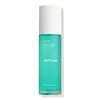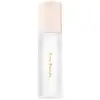What's inside
What's inside
 Key Ingredients
Key Ingredients

 Benefits
Benefits

 Concerns
Concerns

 Ingredients Side-by-side
Ingredients Side-by-side

Water
Skin ConditioningGlycerin
HumectantGlycereth-26
HumectantPropanediol
SolventSucrose
HumectantPolysorbate 20
EmulsifyingAnthemis Nobilis Flower Water
MaskingHamamelis Virginiana Water
AstringentPhenoxyethanol
PreservativeLavandula Angustifolia Oil
MaskingCaprylyl Glycol
Emollient1,2-Hexanediol
Skin ConditioningLinalool
PerfumingEthylhexylglycerin
Skin ConditioningChondrus Crispus Powder
AbrasivePropylene Glycol
HumectantPEG-32
HumectantBenzyl Alcohol
PerfumingGeraniol
PerfumingPortulaca Grandiflora Extract
Skin ConditioningHibiscus Syriacus Bark Extract
Skin ConditioningLimonene
PerfumingDehydroacetic Acid
PreservativeCI 42090
Cosmetic ColorantCI 19140
Cosmetic ColorantWater, Glycerin, Glycereth-26, Propanediol, Sucrose, Polysorbate 20, Anthemis Nobilis Flower Water, Hamamelis Virginiana Water, Phenoxyethanol, Lavandula Angustifolia Oil, Caprylyl Glycol, 1,2-Hexanediol, Linalool, Ethylhexylglycerin, Chondrus Crispus Powder, Propylene Glycol, PEG-32, Benzyl Alcohol, Geraniol, Portulaca Grandiflora Extract, Hibiscus Syriacus Bark Extract, Limonene, Dehydroacetic Acid, CI 42090, CI 19140
Water
Skin ConditioningCaprylic/Capric Triglyceride
MaskingGlycerin
HumectantDipropylene Glycol
HumectantNiacinamide
Smoothing1,2-Hexanediol
Skin ConditioningButylene Glycol
HumectantPanthenol
Skin ConditioningAllantoin
Skin ConditioningBetaine
HumectantSodium Chloride
MaskingSqualane
EmollientEthylhexylglycerin
Skin ConditioningTrehalose
HumectantSodium Benzoate
MaskingDisodium EDTA
Olea Europaea Fruit Oil
MaskingCitrus Aurantium Bergamia Fruit Oil
MaskingLavandula Angustifolia Oil
MaskingSodium Hyaluronate
HumectantGardenia Florida Fruit Extract
Skin ConditioningNelumbo Nucifera Flower Extract
Skin ConditioningNymphaea Odorata Root Extract
RefreshingCananga Odorata Flower Oil
MaskingCitric Acid
BufferingCitrus Aurantium Dulcis Oil
MaskingCymbopogon Martini Oil
MaskingPelargonium Graveolens Flower Oil
MaskingMichelia Alba Flower Oil
MaskingEugenia Caryophyllus Leaf Oil
MaskingSodium Citrate
BufferingEucalyptus Globulus Leaf Oil
PerfumingJasminum Officinale Oil
MaskingLimonene
PerfumingLinalool
PerfumingWater, Caprylic/Capric Triglyceride, Glycerin, Dipropylene Glycol, Niacinamide, 1,2-Hexanediol, Butylene Glycol, Panthenol, Allantoin, Betaine, Sodium Chloride, Squalane, Ethylhexylglycerin, Trehalose, Sodium Benzoate, Disodium EDTA, Olea Europaea Fruit Oil, Citrus Aurantium Bergamia Fruit Oil, Lavandula Angustifolia Oil, Sodium Hyaluronate, Gardenia Florida Fruit Extract, Nelumbo Nucifera Flower Extract, Nymphaea Odorata Root Extract, Cananga Odorata Flower Oil, Citric Acid, Citrus Aurantium Dulcis Oil, Cymbopogon Martini Oil, Pelargonium Graveolens Flower Oil, Michelia Alba Flower Oil, Eugenia Caryophyllus Leaf Oil, Sodium Citrate, Eucalyptus Globulus Leaf Oil, Jasminum Officinale Oil, Limonene, Linalool
 Reviews
Reviews

Ingredients Explained
These ingredients are found in both products.
Ingredients higher up in an ingredient list are typically present in a larger amount.
1,2-Hexanediol is a synthetic liquid and another multi-functional powerhouse.
It is a:
- Humectant, drawing moisture into the skin
- Emollient, helping to soften skin
- Solvent, dispersing and stabilizing formulas
- Preservative booster, enhancing the antimicrobial activity of other preservatives
Ethylhexylglycerin (we can't pronounce this either) is commonly used as a preservative and skin softener. It is derived from glyceryl.
You might see Ethylhexylglycerin often paired with other preservatives such as phenoxyethanol. Ethylhexylglycerin has been found to increase the effectiveness of these other preservatives.
Glycerin is already naturally found in your skin. It helps moisturize and protect your skin.
A study from 2016 found glycerin to be more effective as a humectant than AHAs and hyaluronic acid.
As a humectant, it helps the skin stay hydrated by pulling moisture to your skin. The low molecular weight of glycerin allows it to pull moisture into the deeper layers of your skin.
Hydrated skin improves your skin barrier; Your skin barrier helps protect against irritants and bacteria.
Glycerin has also been found to have antimicrobial and antiviral properties. Due to these properties, glycerin is often used in wound and burn treatments.
In cosmetics, glycerin is usually derived from plants such as soybean or palm. However, it can also be sourced from animals, such as tallow or animal fat.
This ingredient is organic, colorless, odorless, and non-toxic.
Glycerin is the name for this ingredient in American English. British English uses Glycerol/Glycerine.
Learn more about GlycerinLavandula Angustifolia Oil is more commonly known as lavender essential oil. It is considered a fragrancing ingredient.
Lavender imparts a famous scent. While the smell is lovely, this ingredient and may sensitize skin in topical products. This is because about 85% of the oil is made up of linalool and linalyl acetate.
When exposed to air, these two compounds become strong allergens. This ingredient exhibits cytotoxicity at low concentrations; amounts of 0.25% have been shown to damage skin cells.
A study from Japan found this ingredient caused lavender sensitivity after widespread exposure.
Lavender essential oil has some antimicrobial, antibacterial, and anti-inflammatory properties. However, the cons of this ingredient may outweight the pros.
More research is needed to confirm lavender essential oil's effects when used in aromatherapy.
Lavandula Angustifolia is known as the English Lavender and famous for creating purple fields in Provence, France.
Learn more about Lavandula Angustifolia OilLimonene is a fragrance that adds scent and taste to a formulation.
It's found in the peel oil of citrus fruits and other plants such as lavender and eucalyptus. The scent of limonene is generally described as "sweet citrus".
Limonene acts as an antioxidant, meaning it helps neutralize free radicals.
When exposed to air, oxidized limonene may sensitize the skin. Because of this, limonene is often avoided by people with sensitive skin.
The term 'fragrance' is not regulated in many countries. In many cases, it is up to the brand to define this term. For instance, many brands choose to label themselves as "fragrance-free" because they are not using synthetic fragrances. However, their products may still contain ingredients such as essential oils that are considered a fragrance.
Learn more about LimoneneLinalool is a fragrance and helps add scent to products. It's derived from common plants such as cinnamon, mint, citrus, and lavender.
Like Limonene, this ingredient oxidizes when exposed to air. Oxidized linalool can cause allergies and skin sensitivity.
This ingredient has a scent that is floral, spicy tropical, and citrus-like.
Learn more about LinaloolWater. It's the most common cosmetic ingredient of all. You'll usually see it at the top of ingredient lists, meaning that it makes up the largest part of the product.
So why is it so popular? Water most often acts as a solvent - this means that it helps dissolve other ingredients into the formulation.
You'll also recognize water as that liquid we all need to stay alive. If you see this, drink a glass of water. Stay hydrated!
Learn more about Water